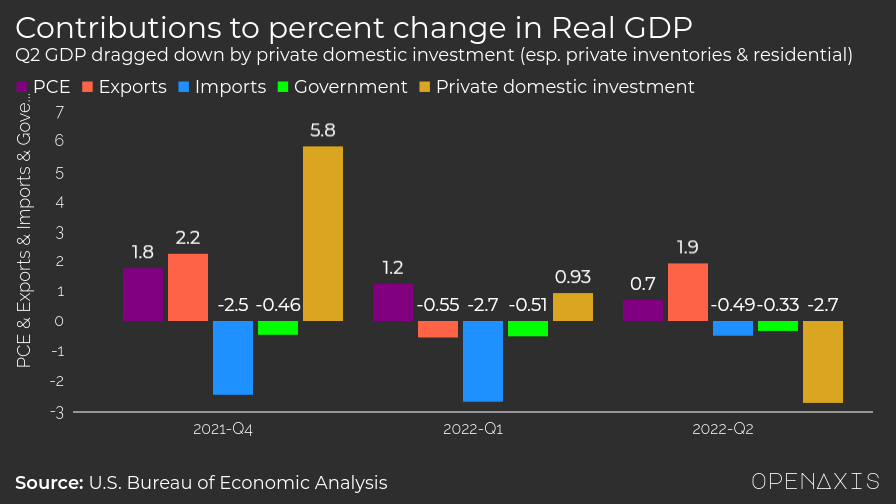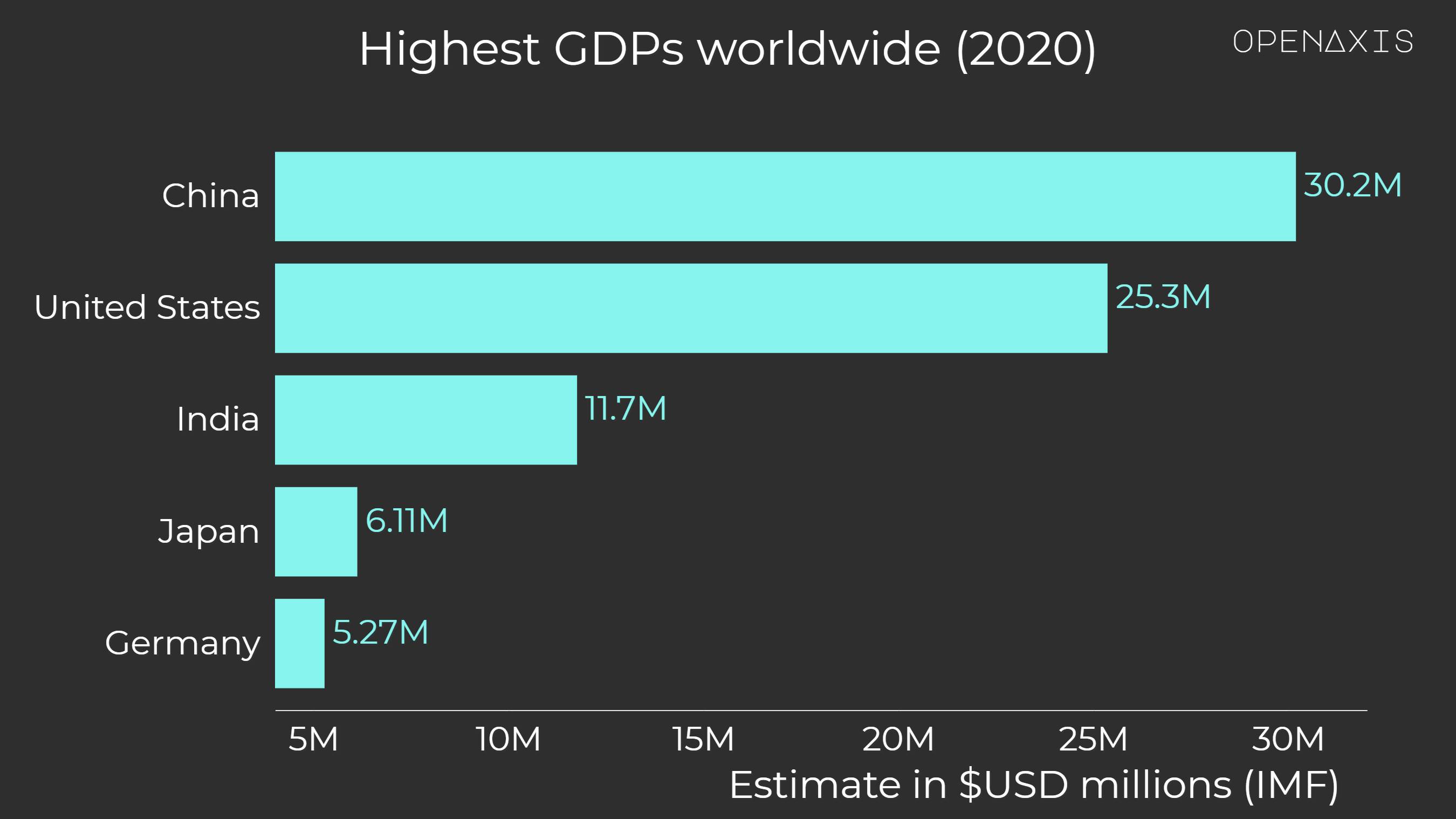Co-founder and CTO of OpenAxis
Despite the role that crime is playing in our local and state elections while headed into the 2022 midterms, city level data actually tells story of fewer murders compared to this point in 2021 in many major cities across the US.
While the largest 5 cities (New York, Los Angeles, Chicago, and Houston all had fewer murders in 2022 than in 2021, murders in Phoenix (the 6th largest city) are up 25%.
This data was pulled from AH Datalytics on 2022-10-31, but last update time by individual police departments my vary.
Gross domestic product (GDP) is the value of the goods and services produced by the nation's economy less the value of the goods and services used up in production. GDP is also equal to the sum of personal consumption expenditures, gross private domestic investment, net exports of goods and services, and government consumption expenditures and gross investment. Real values are inflation-adjusted estimates—that is, estimates that exclude the effects of price changes.
For more information about this series, please visit the Bureau of Economic Analysis.
Suggested Citation:
U.S. Bureau of Economic Analysis, Real Gross Domestic Product [A191RL1Q225SBEA], retrieved from FRED, Federal Reserve Bank of St. Louis; https://fred.stlouisfed.org/series/A191RL1Q225SBEA, July 28, 2022.
Percentage Points at Annual Rate, Seasonally Adjusted Annual Rate
Contributions to percent change in real gross domestic product: Personal consumption expenditures (DPCERY2Q224SBEA)
Contributions to percent change in real gross domestic product: Exports of goods and services (A020RY2Q224SBEA)
Contributions to percent change in real gross domestic product: Imports of goods and services (A021RY2Q224SBEA)
Contributions to percent change in real gross domestic product: Government consumption expenditures and gross investment (A822RY2Q224SBEA)
Contributions to percent change in real gross domestic product: Gross private domestic investment (A006RY2Q224SBEA)
U.S. Bureau of Economic Analysis, Contributions to percent change in real gross domestic product, retrieved from FRED, Federal Reserve Bank of St. Louis; https://fred.stlouisfed.org/series/A006RY2Q224SBEA, July 28, 2022.
Civiqs surveys registered voters on topics such as the direction of the national economy. They ask "Do you think the nation's economy is getting better or worse?" This is a time series of the responses broken down by party (in percentages).
Their breakdowns and visualizations can be found on Civiqs.
Despite the highest inflation in 40-years, real wages are higher than pre-pandemic.
Real wages in March 2022, as calculated by the ratio of Avg. Hrly Earnings to CPI, is actually up 1.8% since Jan 2020!
Average Hourly Earnings are of Production and Nonsupervisory Employees, Total Private, which Paul Krugman used in his Jan 25th op-ed discussing the inflation narrative.
#economy #inflation #wages
No Collections Found.

Despite the highest inflation in 40-years, real wages are higher than pre-pandemic as of May 2022. Real wages in May 2022, as calculated by the ratio of Avg. Hrly Earnings to CPI, is actually up 1.4% since Jan 2020.
Average Hourly Earnings are of Production and Nonsupervisory Employees, Total Private, which Paul Krugman used in his Jan 25th op-ed discussing the inflation narrative.
Source: U.S. Bureau of Labor Statistics
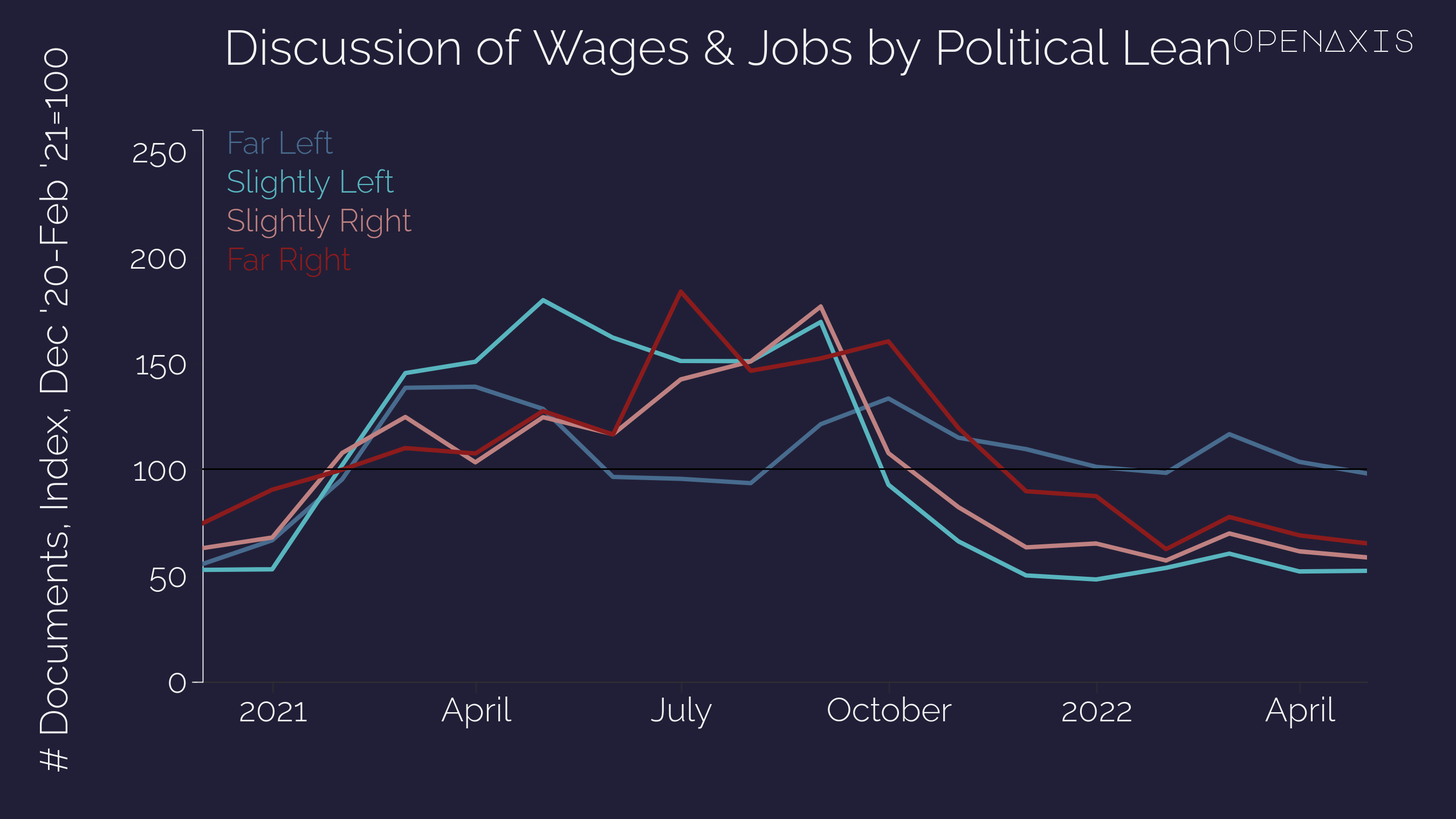
More positive economic terms like “employment,” “jobs,” “raises,” and “wages” were actually talked about disproportionately less frequently by the Far Left in June, July, and August of 2021, but disproportionately more since December 2021. This while all other political orientations talked about it less than they did Dec 2020-Feb-2021.
Despite how critical inflation and unemployment are - we’re experiencing the highest inflation in 40 years and we’re just 10 basis points above the lowest unemployment in 50 years - the manner in which outlets with different political orientations talk about the economy changes over time. The data suggests that outlets aligned with the party in power focus on the positives yet minimize the negatives while those not aligned with the party in power do the opposite.
Source: PeakMetrics
Using PeakMetrics data we breakdown how many articles/podcasts/broadcasts discuss "inflation" or "costs" broken down by the political lean of the publishing organization (as classified by NewsGuard).
We count those articles each month by the Far Left, Slightly Left, Slightly Right and Far Right outlets and index that count by that category’s Dec 2020-Feb-2021 average (setting the average of the base period to 100).

Inflation rose further in May to 8.5% over a year ago, while the rate of wages increases actually cooled slightly, rising only 6.5% compared to a year ago.
Source: U.S. Bureau of Labor Statistics
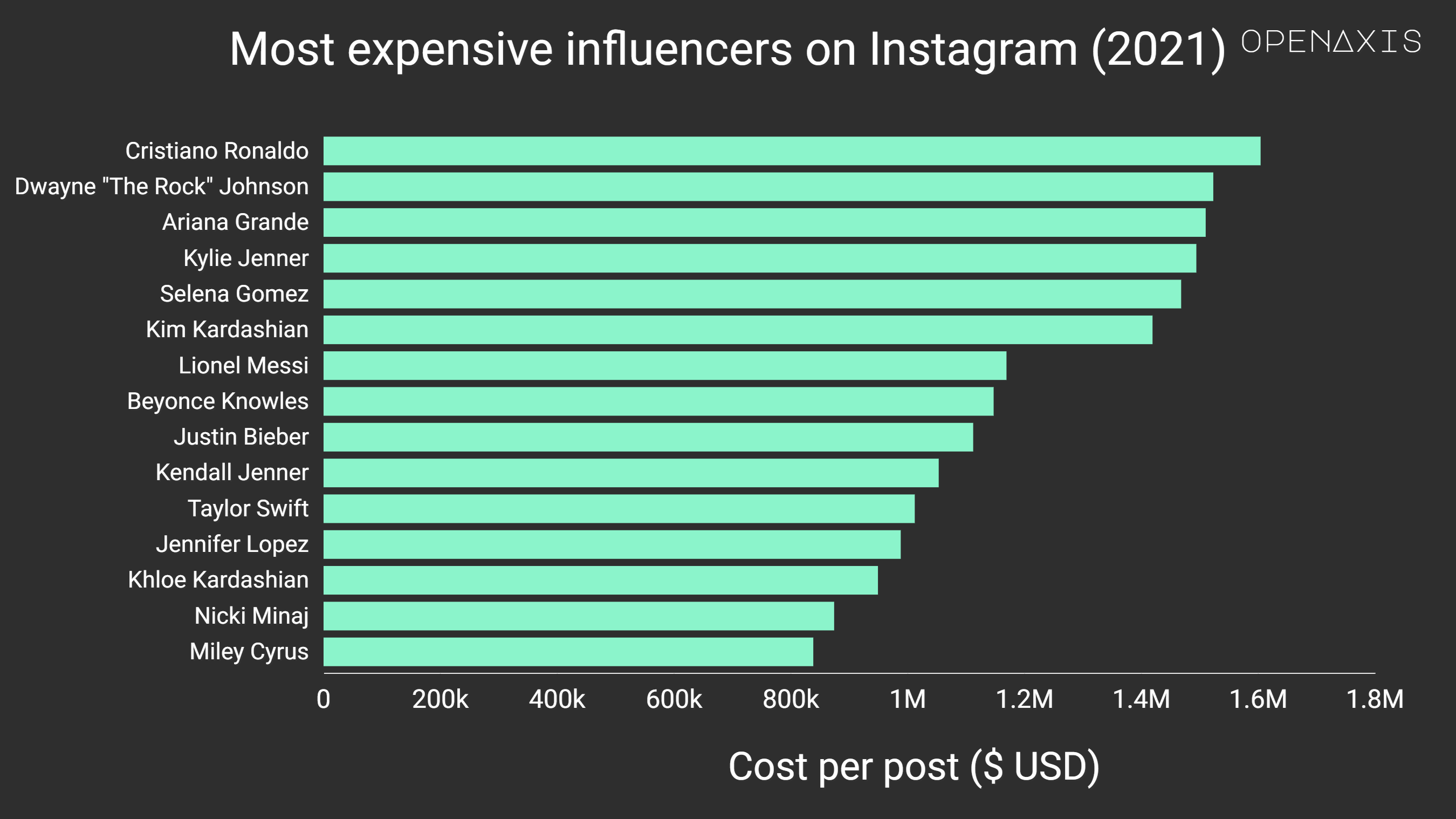
Celebrities with the highest average earnings per sponsored Instagram post in 2021.
According to analysis by social media marketing platform Hopper HQ, Ronaldo earns the most of any other Instagram influencer per sponsored post, raking in an average of $1.6 million every time.
As the dataset shows, many celebrities are able to pull in sums north of a million when selling their influence. Actor and ex-WWE wrestler Dwayne "The Rock" Johnson can expect to earn $1.5 million for such posts, while singer Ariana Grande is the most expensive woman on the list, joining five others in the top ten.
#socialmedia #influencer #marketing #paidmedia
Source: Hopper HQ
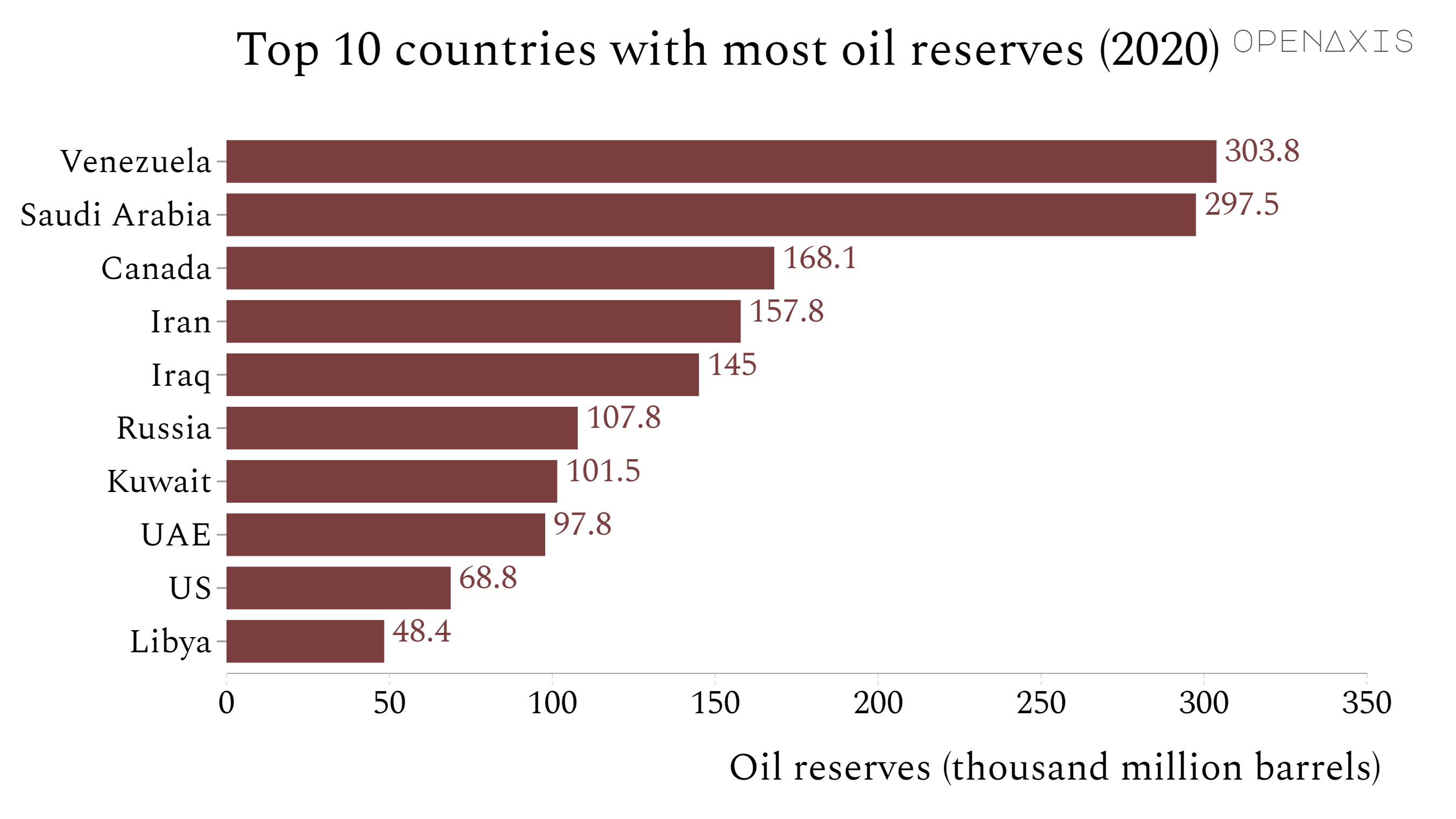
Global proved oil reserves were 1732 billion barrels at the end of 2020, down 2 billion barrels versus 2019. OPEC holds 70.2% of global reserves. The top countries in terms of reserves are Venezuela (17.5% of global reserves), closely followed by Saudi Arabia (17.2%) and Canada (9.7%).
Source: BP - Statistical Review of World Energy 2021 Report
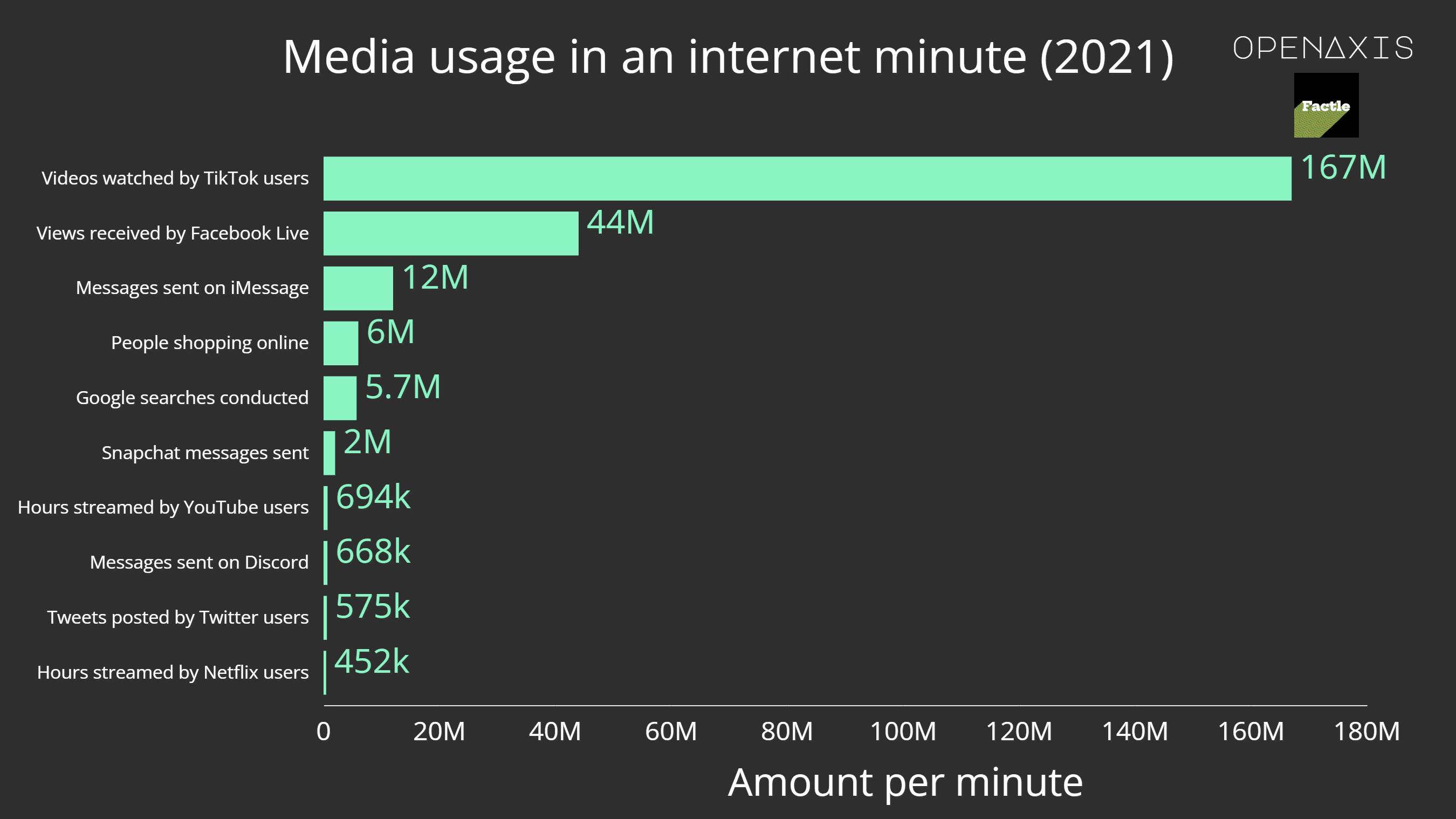
A lot of things happen in an internet minute – millions of messages, e-mails and texts are sent, scrolled and uploaded, and hundreds of thousands of hours of content are consumed. In a 2021 internet minute, 452 thousand hours of Netflix content were streamed by users worldwide.
#socialmedia #online
Source: Statista Research Department
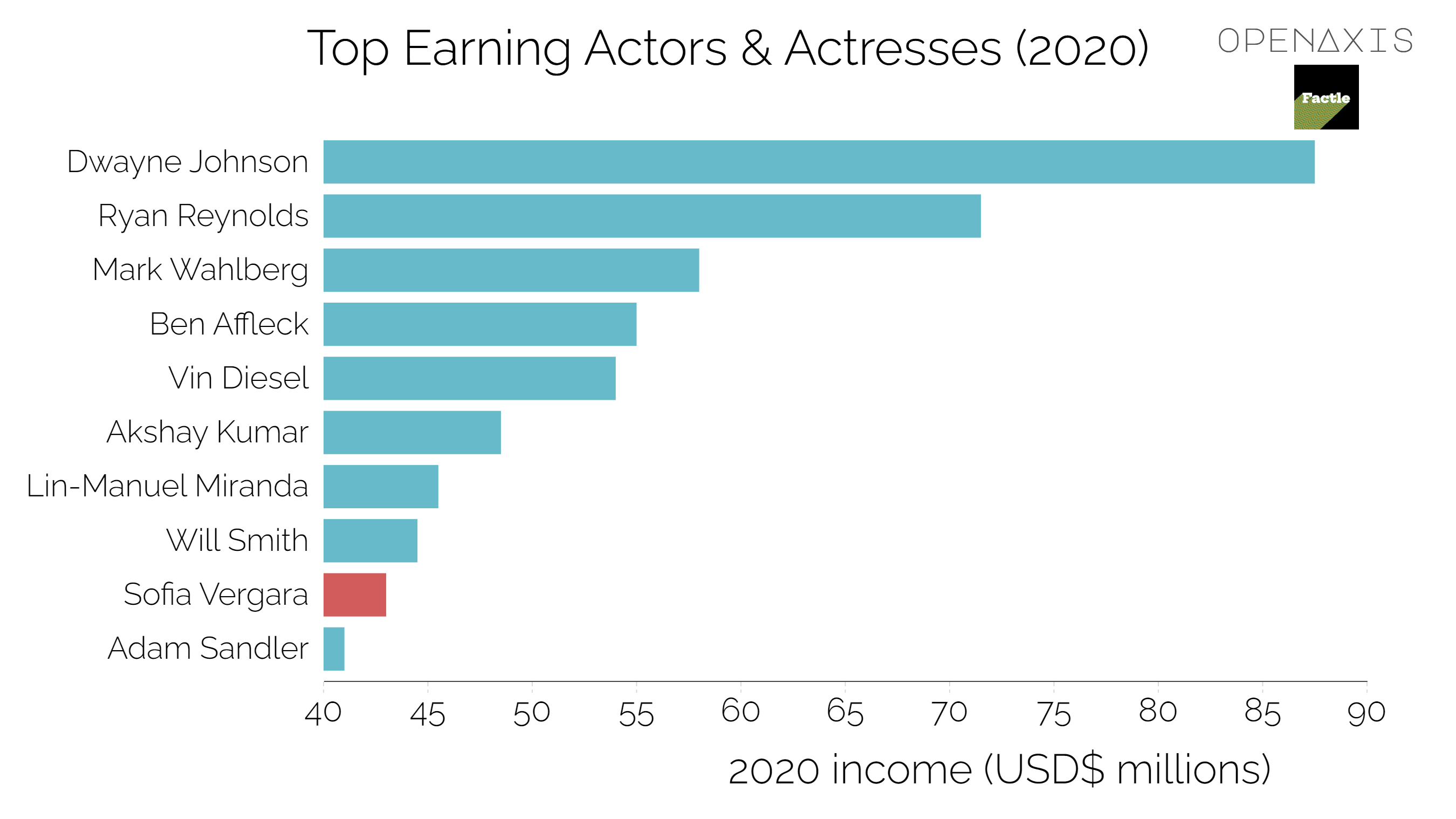
Dwayne Johnson led the list of best paid actors worldwide in 2020. He earned 87.5 million U.S. dollars thanks to Netflix's action comedy movie "Red Notice", amongst others. Ryan Reynolds ranked second with an income of 71.5 million U.S. dollars. The list also includes Bollywood actor Akshay Kumar, who had an income of 48.5 million U.S. dollars.
The best-paid actress worldwide was Sofia Vergara in 2020, with an annual income of 43 million U.S. dollars. Angelina Jolie came second. She earned roughly 35.5 million U.S. dollars with for example her leading role in "The Eternals".
Source: Forbes
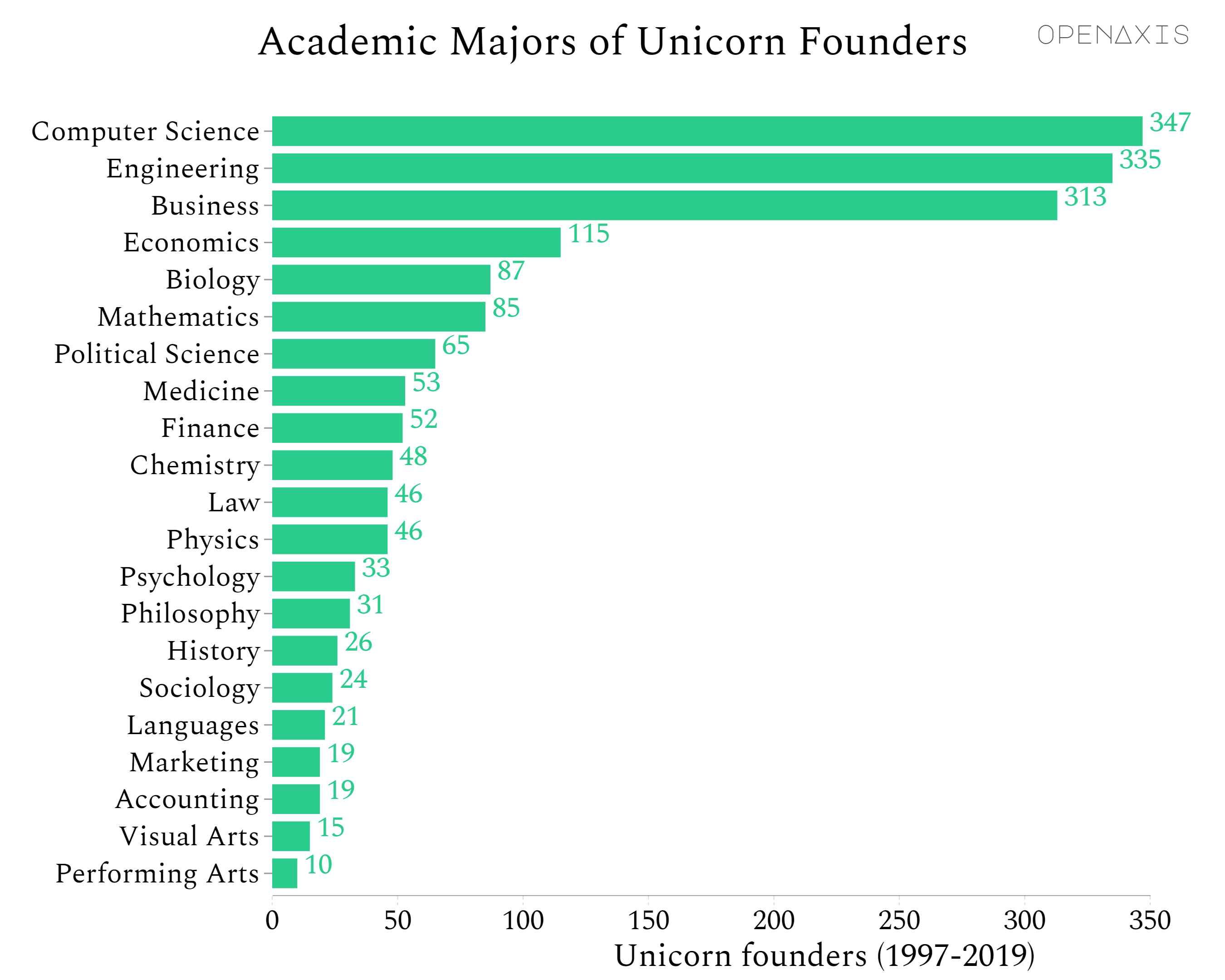
Values show the number of unicorn (co-)founders who have a particular major. Majors with at least 10 founders are shown. Data covers 531 US companies that became unicorns (+$1 billion valuation) between 1997-2019.
Data by Ilya Strebulaev and his team at Stanford GSB Business Venture Capital Initiative identified academic degrees earned by 1,263 of 521 US unicorns.
- 236 founders (19%) have an MBA degree.
- 217 founders (17%) have Master’s degrees other than MBAs.
- 39 people have a dual Master’s degree, including an MBA.
- 286 founders (23%) earned doctoral degrees, such as Ph.D. and MD.
- 15 people have an MBA and a doctoral degree.
- And 56 founders dropped out of college (many in order to start their companies).
#startups #founders #majors #education
Source: Ilya Strebulaev, Venture Capital Initiative, Stanford GSB
